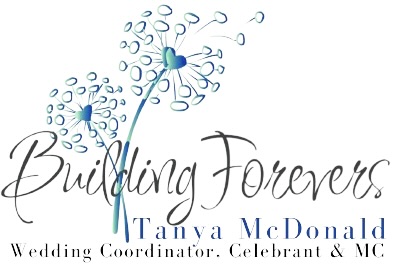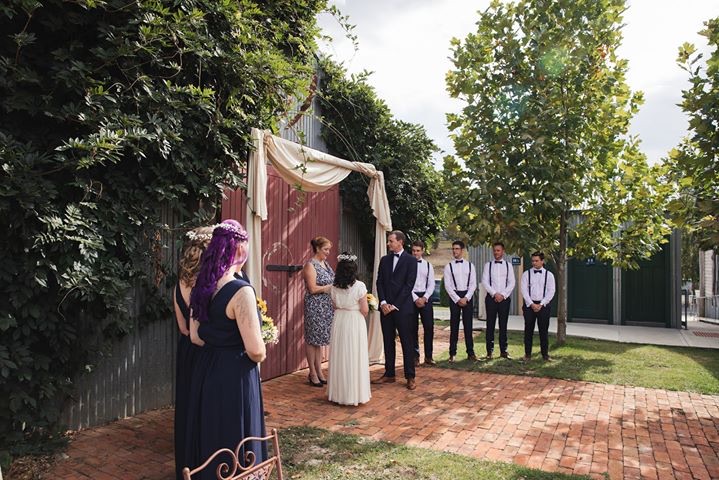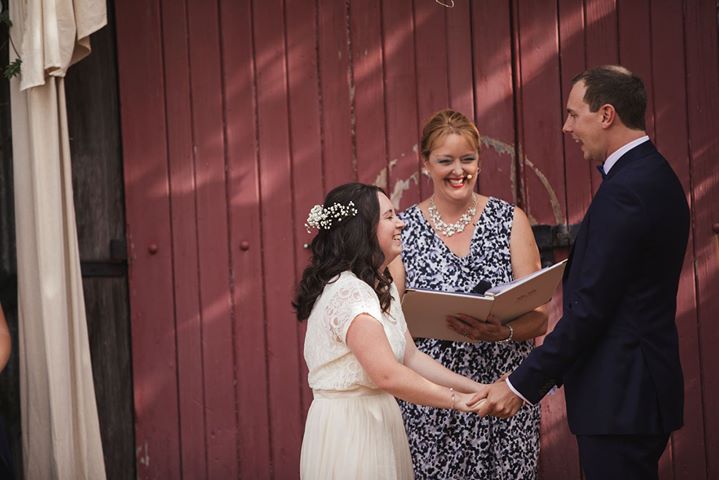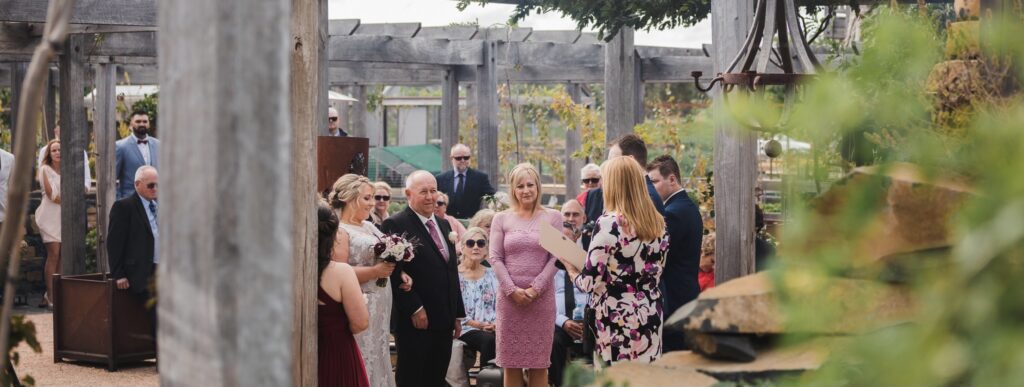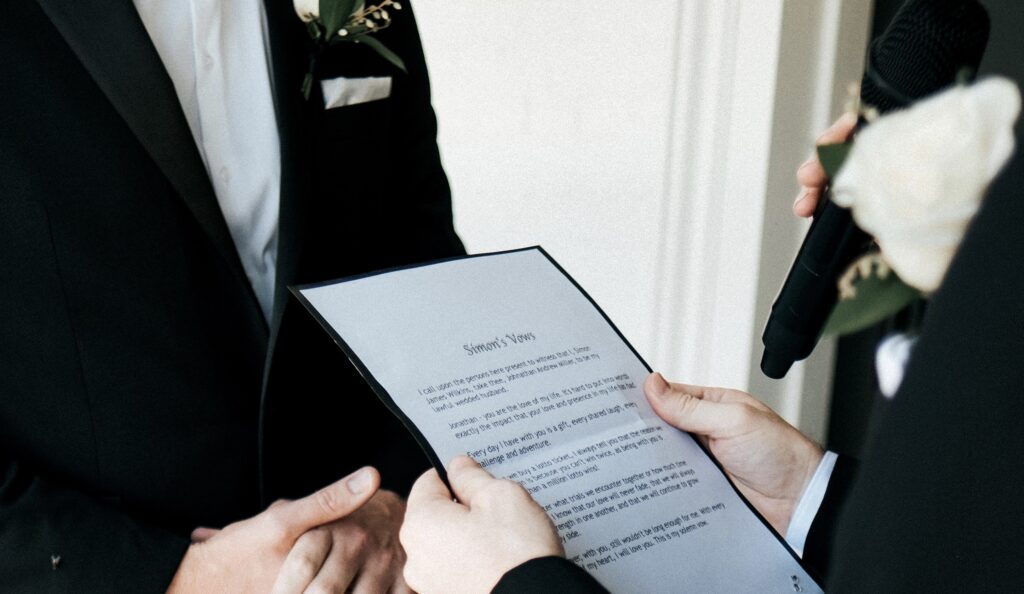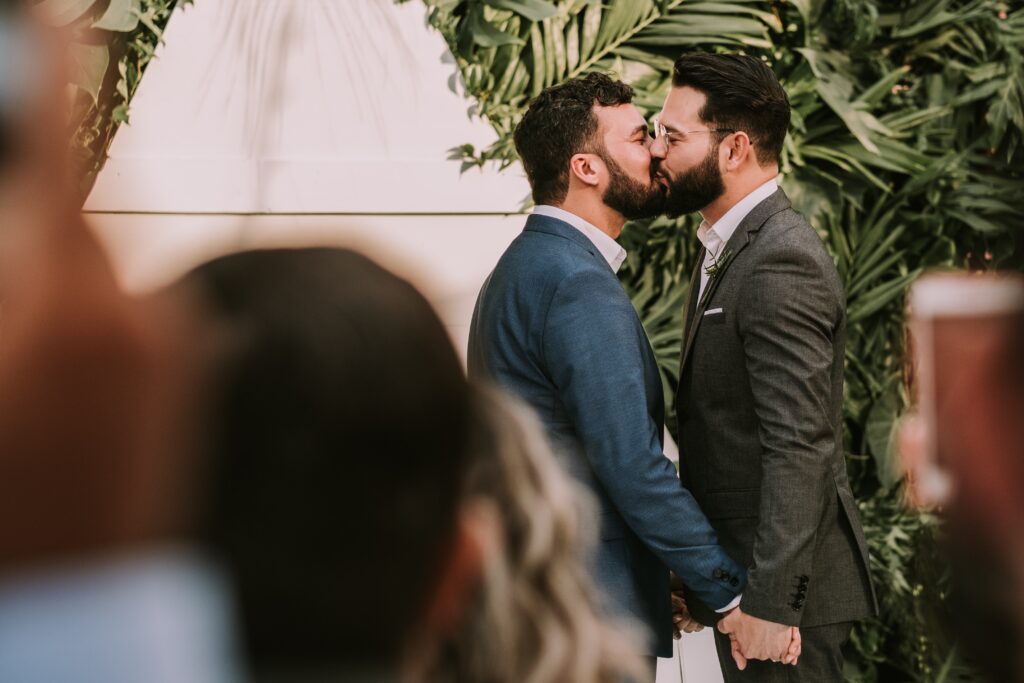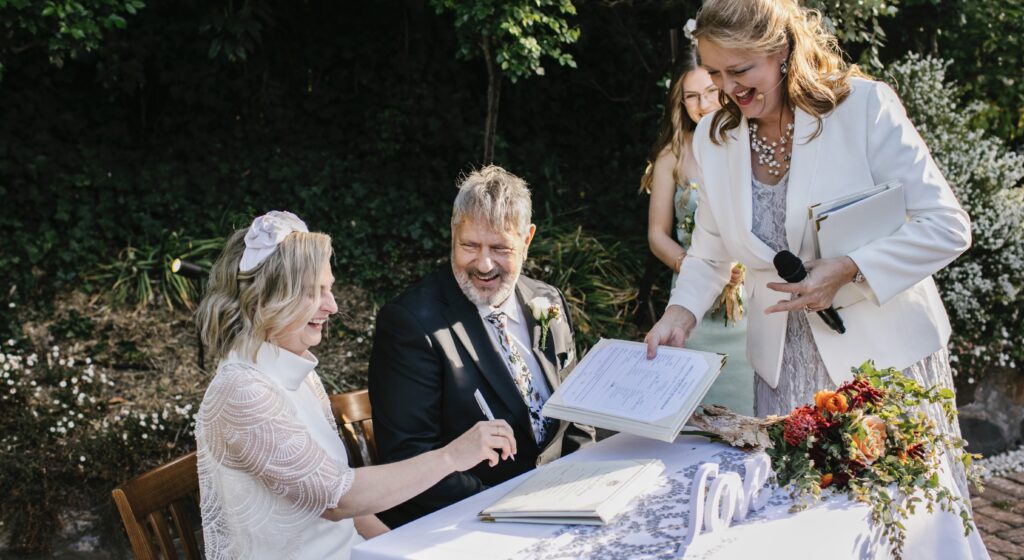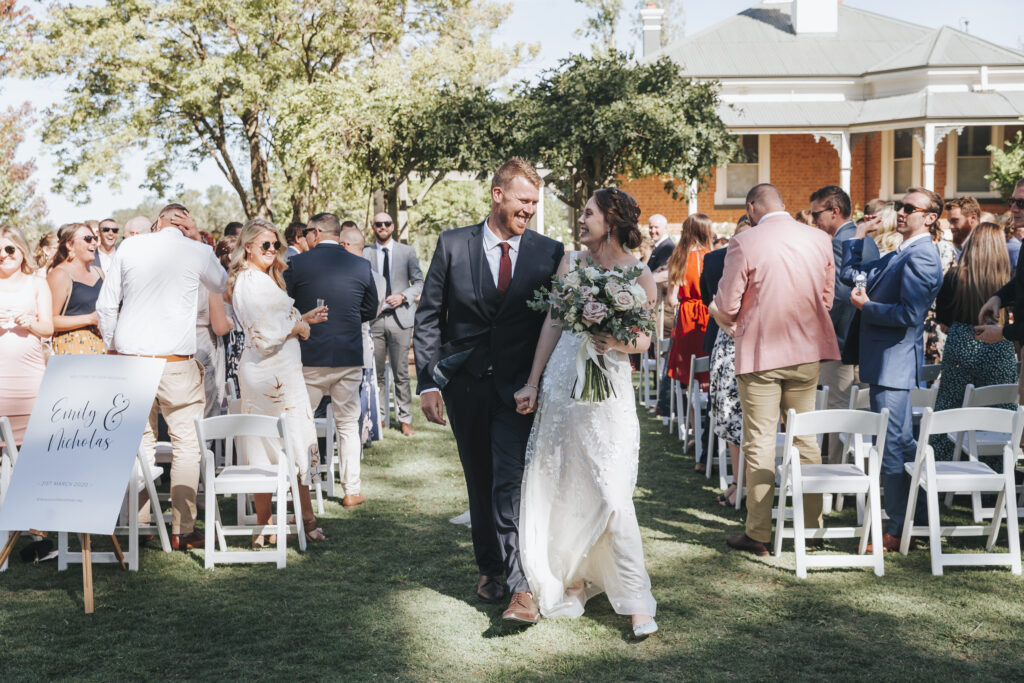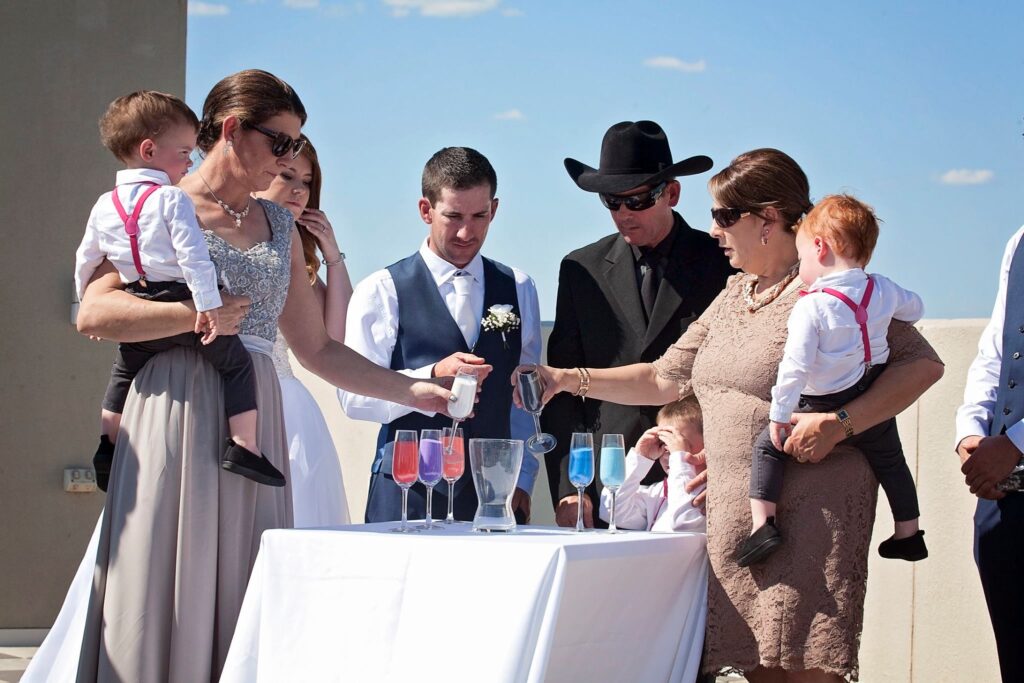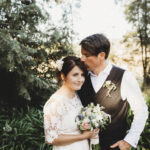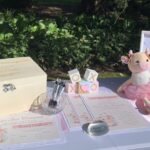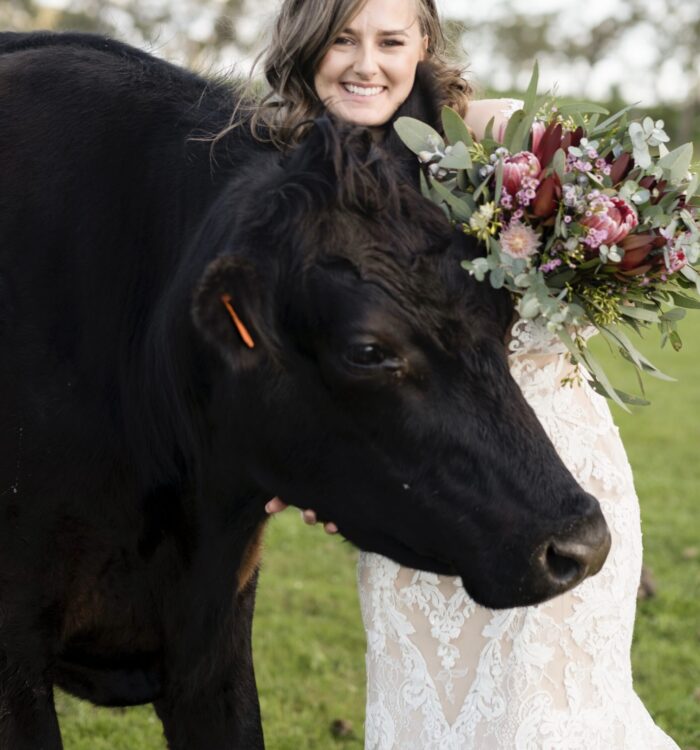1) Decide on the type of ceremony
Religious, cultural, traditional, or non-religious wedding ceremony the first step to creating your ceremony will be to figure out the type of ceremony you want. You may even want to include different elements from each type of wedding ceremony to create your own.
2) Book your celebrant
It is really important to book your celebrant as soon as you have a wedding date. Yes, there are 1000’s celebrants to choose from but the good and popular ones book quickly.
Need help selecting your celebrant my blog has 10 top tips on how to choose your celebrant.
3) Welcome and Introduction
This is to welcome guests, family, and friends to the wedding.
The introduction is about the union of marriage. Good celebrants will offer you either introduction options to select from or they will write one that best reflects the meaning of marriage to you.
For example:
The meaning of family
The meaning of love and marriage
How the couple’s relationship started
How and what they hope for the future
4) Presentation (Traditionally known as “Giving Away”)
Traditionally this is the time in the ceremony when the celebrant asks,
“Who gives this woman to be married to this man” and the bride’s father says “I do”.
In contemporary weddings, the celebrant asks a similar question to the person(s) who have been chosen.
The question asked can vary from celebrant to celebrant. A good celebrant will give you options and you can use these or create your own.
The person or people the question can be asked to can be anyone you like. It could be the person walking you up the aisle, all the parents, or all your guests. Again this decision is totally up to you.
You may even decide not to include this section in your ceremony.
5) Celebrant Authority (Momentum)
The Celebrant Authority is a legal section of the marriage and must be included as per subsection 46(1) of the Marriage Act. Sometimes referred to as the ‘momentum’ this must be used by Commonwealth-registered marriage celebrants in solemnising a marriage.
Now, I, (celebrants name), an authorised marriage celebrant, am duly authorised by the law to solemnise marriages according to law. Before you are joined in marriage in my presence and in the presence of these witnesses, I am to remind you of the solemn and binding nature of the relationship into which you are now about to enter.
Marriage, according to law in Australia, is the union of two people to the exclusion of all others, voluntarily entered into for life.
6) The Asking
The Asking is for the couple to verify they are getting married because they want to. The celebrant will ask them both a question after which they will answer: I will/I do
7) Vows
This is another legal section and as per subsection 45(2) of the Marriage Act sets out the minimum words (or vows) which must be used by the couple for a non-religious (civil) ceremony to be a marriage ceremony: Each of the parties to the marriage must say the vows to each other.
“I call upon the persons here present to witness that I, A.B. (or C.D.), take thee, C.D. (or A.B.), to be my lawful wedded (wife, husband or spouse).
Couples wishing to personalise their vows are able to add their chosen wording after saying the minimum words (so long as any material added does not contradict the minimum vows).
Nicknames should not be used in the legal section of the vows. However, shortened names or nicknames may be used in the personal vow section.
Writing your personal vows can be a daunting thought, but if you use the words from your heart it won’t be wrong. Don’t forget your celebrant is also there to help you.
8) Ring Exchange
The exchange of wedding rings represents the vows the couple has exchanged.
In today’s society, some people select not to wear a ring. This can be for many reasons but a major reason is because of the field of work they are in.
If only one of the couple wants to exchange a ring then you may like to include a “Symbol of Unity” ritual for the 2nd person. Alternatively, you may select not to include this section.
9) Declaration of Marriage
This is when the couple is legally declared married and when you are asked to seal your union with a kiss.
The introduction of the kiss can be said in any way you like. Your celebrant should have some suggestions on different wording options.
10) Signing the register
Next, the legal documents are signed.
Under section 44 of the Marriage Act, you require two witnesses over the age of 18 years who are present at the ceremony to sign the marriage certificates as witnesses to the marriage.
It is your choice of who you select as your witnesses as long as they comply with section 44 of the Marriage Act.
Some people couples have chosen are:
Parents
Grandparents
Siblings
Best friends
Special family
11) Introduction
This is when the couple is presented to the guests and signals the end of the wedding ceremony.
